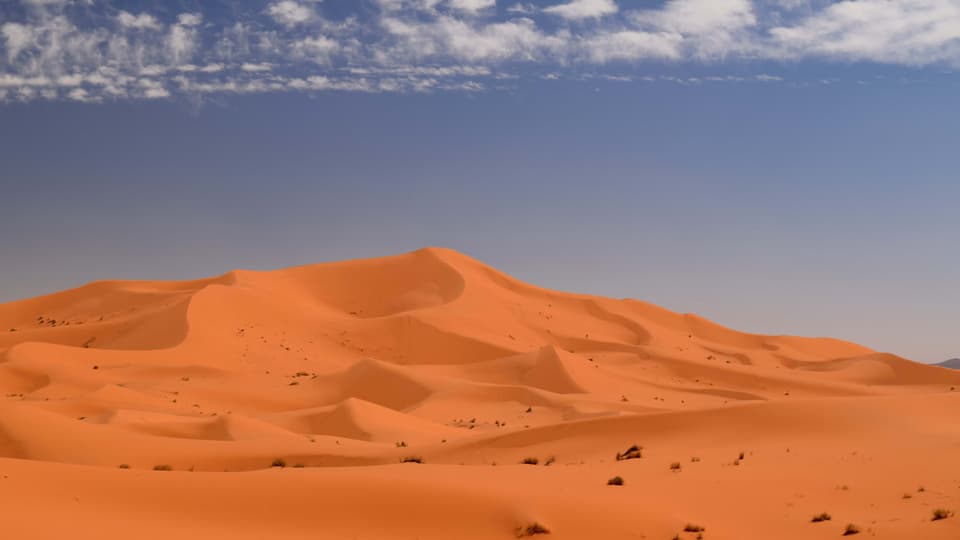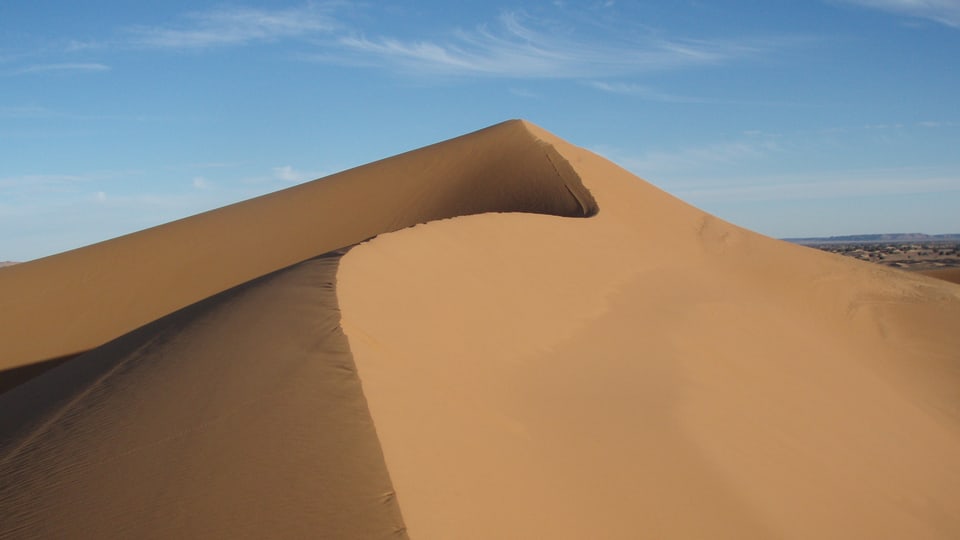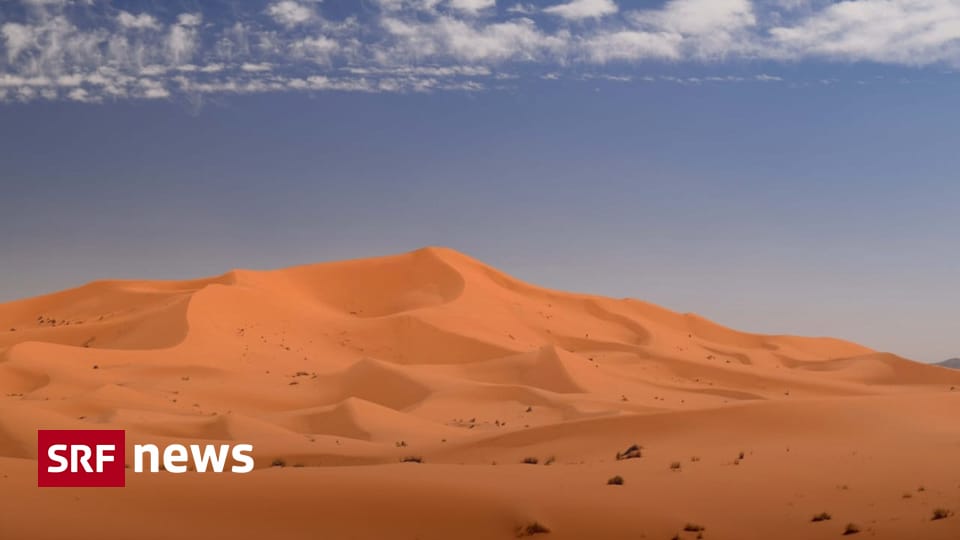Stellar dunes rarely appear in the geological record until now. Pioneering research results now show that the dunes are much younger than previously thought. And they are moving.
The towering sand dunes provide a stunning sight. It can grow up to 300 meters in height. The so-called star dunes represent a special shape, where several dune arms meet at a common end. From above they resemble the shape of a star. These dunes have so far been neglected by research, even though they are among the largest and highest types of sand dunes.
British researchers have now examined the Lala Lalia sand dunes in Morocco and have been able to determine their history. Research by scientists at the universities of Aberystwyth, Birkbeck and University College London shows that the oldest parts of the base of the Moroccan dunes are 13,000 years old – much younger than previously thought.
The results were published in the journal Scientific Reports.
In addition, the sand pyramid has grown rapidly over the past thousand years. According to researchers, during this period it reached its current height of 100 meters and 700 meters in width. The new results also show that the dunes are moving westward.
Previously it was assumed that the star dunes did not move. “These star dunes in southeastern Morocco move about half a meter per year,” explains Manuel Herzog. He works at the Geographic Institute of Heidelberg University.

legend:
Huge star sand dunes in the Erg Chebbi Sand Sea in southeastern Morocco. Star dunes are formed as a result of opposing winds that change direction.
Reuters/Charlie Bristow/Handout
High rates of movement are relevant: “The dune site is located next to a small oasis that is also used for agriculture. Over the years it can happen that this oasis gets buried. This destroys people's livelihoods,” says Herzog. This risk also exists in all other sites that It contains stellar dunes, “not only for oases, but also for roads or human infrastructure as a whole.”

legend:
Lala Lalia means “highest sacred point” in the Berber language.
Reuters/Charlie Bristow/Handout
The single case study of Morocco refers to a specific topography with a specific topography and a specific wind field. It does not apply to all star sand dunes worldwide. These sand pyramids, which look like stars when viewed from above, are common in Africa, Arabia, China and North America.
“Each stellar dune has different conditions that need to be studied. So we need more case studies and more chronological dating,” says Herzog. Now it’s a matter of searching for and measuring the processes: “What exactly are the processes involved?” How does the wind move the sand into such large shapes? How fast is it moving?”
New technology reveals the secrets of stellar dunes
New research is made possible by new technologies. The age of the dunes was determined using scintillation dating techniques. This enabled the researchers to determine when the minerals in the sand were last exposed to sunlight. This enabled them to determine the age of individual layers.

“Typical entrepreneur. Lifelong beer expert. Hipster-friendly internet buff. Analyst. Social media enthusiast.”






More Stories
Treasure from a Baltic Shipwreck: Champagne and Mineral Water Discovered – News
US Election Year 2024 – Trump Celebrated as Pop Star at Party Conventions – News
Donald Trump’s photo after assassination attempt: What does it mean? – News